MARIANI’S
January 15, 2006
NEWSLETTER

Annette
Bening, Thora Birch and Kevin Spacey in "American Beauty" (1999)
UPDATE:
To
go to my web site, in which I will update food
&
travel information and help link readers to other first-rate travel
& food sites, click on: home page
ACCESS TO
ARCHIVE: Readers may now access
an
Archive of all past newsletters--each annotated--dating back to July,
2003, by simply clicking on www.johnmariani.com/archive
. P.S. APOLOGIES FOR THE ARCHIVE
BEING DOWN THIS PAST WEEK. IT IS NOW ON LINE AGAIN.
NEW
FEATURE! You may now subscribe anyone you wish
to this newsletter by
clicking here.
In
This Issue
How L.A. Got Its Groove Going by Janet Albaugh
NEW YORK CORNER: JOVIA by John Mariani
QUICK BYTES
COMPETITIVE DINING IN L.A.
by John Mariani
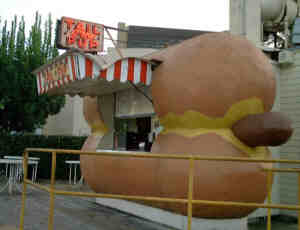 As usual, the L.A. Times got the story
wrong. In
a recent article sensationally entitled
"The Incredible
Shrinking Restaurant Scene," staff writer Corie Brown writes that
fifteen restaurants have closed in Los Angeles in a matter of months,
citing Wolfgang
Puck's Granita in
Malibu, Aubergine in
Newport Beach, EM Bistro, Naya and
Halie in
As usual, the L.A. Times got the story
wrong. In
a recent article sensationally entitled
"The Incredible
Shrinking Restaurant Scene," staff writer Corie Brown writes that
fifteen restaurants have closed in Los Angeles in a matter of months,
citing Wolfgang
Puck's Granita in
Malibu, Aubergine in
Newport Beach, EM Bistro, Naya and
Halie in In a city of 20,000 restaurants, fifteen closings don't seem particularly significant (by comparison, 83 restaurants closed in NYC last year) nor were most of the restaurants listed of any real consequence. Granita out in Malibu had a good, healthy 15-year run, and Aubergine (not exactly in L.A. by a long stretch) seems to have been a victim of owner Tim Goodell's too-rapid expansion elsewhere. Citrine closed because one of the partners died, and the space was bought up within 48 hours by Hollywood producer Mike Ovitz for another restaurant. I doubt many are mourning the demise of any of the rest on Brown's list. Frankly, I am far sadder about the attempt of a developer to raze the famous Tale o' the Pup hot dog stand (above) on San Vincente.
More important, the headline is not just overblown but does a disservice to restaurateurs and readers. Los Angeles' restaurant scene is doing very well indeed, although competition is definitely stronger than ever. In fact, new restaurant space is almost impossible to find. "If there are so many places vacant, I have plenty of chefs looking for locations," restaurant consultant Jerry Prendergast told me. "There simply are not enough locations to fulfill the requirements of the market as it now stands. I'm doing restaurants in downtown because the west side is completely full. I've been been looking for a location for one chef for more than eight months."
So weep not for the Los Angeles restaurant scene, which is alive and well, as I found out on a recent trip to visit new and old places, all doing quite good business, thank you very much. This week, restaurants of long-standing excellence; next week, some stellar new places.
LUCQUES
8474 Melrose Ave
West Hollywood
(323) 655-6277
www.lucques.com
 Suzanne Goin has
become a
kind of Alice Waters in
Suzanne Goin has
become a
kind of Alice Waters in Goin, who had once worked at Chez Panisse, was not the accidental visionary Waters was but was admirably instrumental in restoring simplicity and wholesomeness to an
I’ve enjoyed Lucques over the years and have always said that if I lived in
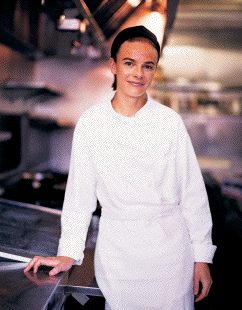
A return recently to Lucques showed just how delightful a restaurant it is amidst the frou-frou that affects so many other
The décor hasn’t changed much, but this was the first time I sat on the patio, which that day was not very busy, which is surprising indeed since the prices are so reasonable, with starters $9-$13 and main courses $15-$19. But then, L.A. is not a big lunch town, despite the extreme, pitiable form of local banishment by saying, "You'll never eat lunch in this town again!"
With two friends I sampled a marvelous pumpkin soup with crème fraîche and fried pepitas, a very fine California-generous salad of Asian pears, arugula, toasted almonds and shaved grana cheese, dressed with olive oil. Seared albacore tuna came with a spicy tomato salsa, an onion frittata and mint, which would have made a good main course too.
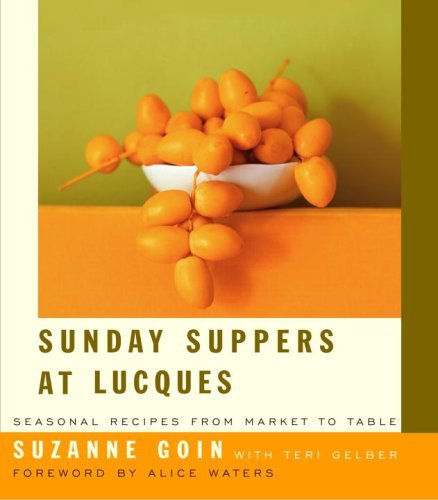 Alaskan halibut, as is too often the case, was a bit
bland, helped along with
wild mushrooms, spigarello,
and chive cream. Succulent, seared
lamb was
grilled on a skewer and served with squash, green beans, and a very
Mediterranean addition of feta cheese and salsa verde. I don’t often
order
sandwiches in restaurants, even at lunch, but I could not have been
happier
with a big, lusty “BLT” made with heirloom tomatoes, nicely smoked
bacon,
luscious avocado, and a hint of basil, all wedged on excellent bread.
Alaskan halibut, as is too often the case, was a bit
bland, helped along with
wild mushrooms, spigarello,
and chive cream. Succulent, seared
lamb was
grilled on a skewer and served with squash, green beans, and a very
Mediterranean addition of feta cheese and salsa verde. I don’t often
order
sandwiches in restaurants, even at lunch, but I could not have been
happier
with a big, lusty “BLT” made with heirloom tomatoes, nicely smoked
bacon,
luscious avocado, and a hint of basil, all wedged on excellent bread.There are only two desserts at lunch and both were wonderful—a persimmon pudding with brown sugar ice cream and maple pecans (what a great idea!) and a frozen pistachio-chocolate terrine with pistachio lace cookie. There is also a sorbet of the day.
If Lucques never really broke the ground Chez Panisse once did in northern California, it nevertheless added a restorative reminder of what Chez Panisse had set in motion—simple, good food done with panache and a real affection for what is put on the menu, something Los Angeles was, and still is, much in need of.
Incidentally, Goin has a brand new book out, Sunday Suppers at Lucques, I highly recommend for exactly the kind of food I love at the restaurant.
THE BELVEDERE
The Peninsula Hotel
310-551-2888
www.peninsula.com
 The
Peninsula Hotel chain has never stinted on very cool luxury, so
you can
imagine
that the
The
Peninsula Hotel chain has never stinted on very cool luxury, so
you can
imagine
that the 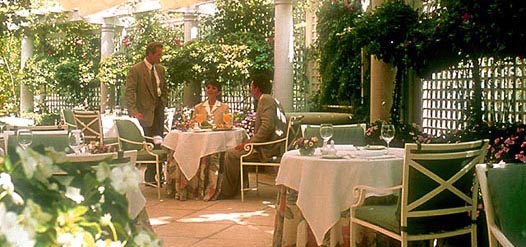 They aim to please here, offering small portions of many
dishes, including lollipops of tuna and hamachi with mango-sesame sauce
and wasabi oil, and sandwiches that include a Cuban item, delicious
hamburgers, and a classic Cobb salad.
They aim to please here, offering small portions of many
dishes, including lollipops of tuna and hamachi with mango-sesame sauce
and wasabi oil, and sandwiches that include a Cuban item, delicious
hamburgers, and a classic Cobb salad.There are other venues at the hotel for dining, including in the Living Room here or the Roof Garden. Brunch is extremely popular, and many people headed for LAX take along a terrific boxed lunch called "Pen Air Meals to Go," for breakfast, lunch, and dinner.
L'ORANGERIE
903 North La Cienega Boulevard
310-652-9770
www.lorangerie.com
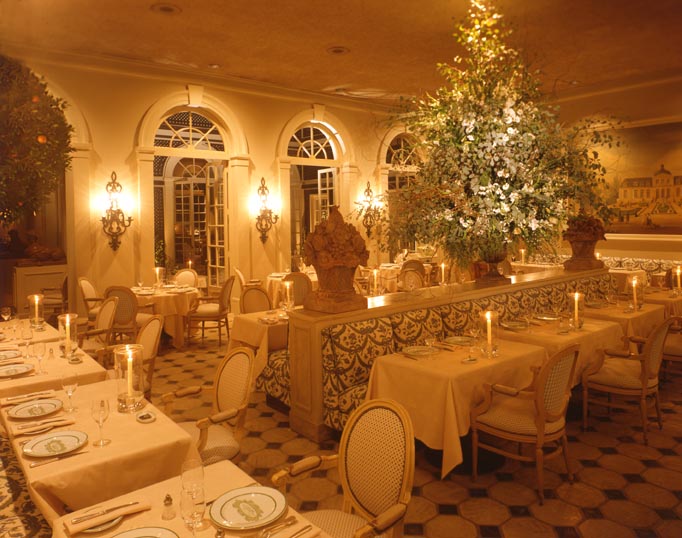 Nearly
three decades' reign as Los Angeles' premier haute cuisine French
dining room, L'Orangerie has,
remarkably, never been better. The
fact that since its debut in 1978 it really has no competition at its
level of posh, service,
winelist, and cuisine is all the more amazing, for as serious
contenders over the years have flared then died out, L'Orangerie sails
onward, overseen by owners Gérard
and Virginie
Ferry with
the kind of care people
lavish on their only child. Add in Maître
d’hôtel
Stéphane
Clasquin and sommelier Emmanuel
Fauré, with a winelist of 600 selections and 25,000
bottles, with a number of
reasonably-priced,
high-quality labels at $50-and-under, 30 half-bottles and twelve
magnums, and you've got good reason to find out why L'Orangerie
has stood the test of time with such consistent panache.
Nearly
three decades' reign as Los Angeles' premier haute cuisine French
dining room, L'Orangerie has,
remarkably, never been better. The
fact that since its debut in 1978 it really has no competition at its
level of posh, service,
winelist, and cuisine is all the more amazing, for as serious
contenders over the years have flared then died out, L'Orangerie sails
onward, overseen by owners Gérard
and Virginie
Ferry with
the kind of care people
lavish on their only child. Add in Maître
d’hôtel
Stéphane
Clasquin and sommelier Emmanuel
Fauré, with a winelist of 600 selections and 25,000
bottles, with a number of
reasonably-priced,
high-quality labels at $50-and-under, 30 half-bottles and twelve
magnums, and you've got good reason to find out why L'Orangerie
has stood the test of time with such consistent panache.If, on any given night, you don't find the room arrayed with Hollywood celebrities, they must be otherwise attending the Oscars. People tend to dress up for L'Orangerie, lest the glamor of the decor steal the spotlight. Jackets are no longer required for gentlemen, but I cannot imagine a gentleman not wearing one here. As the photo of the main dining room (left) shows, the restaurant is festooned with marvelous sprays of flowers beneath tall ceilings and French windows, with soft candlelight on every table, and some enchanting murals that evoke Provence, where the Ferris have a house. There is also an oak-topped bar invites with sofas and a pianist, and in warm weather, you may dine in the garden patio.
For all the time L'Orangerie has been open, it has not had that many chefs, and most have been illustrious, including Christophe Emé, now at Ortolan (to be reviewed next week) and Ludovic Lefébvre, now at Bastide (recently closed for a "new design).
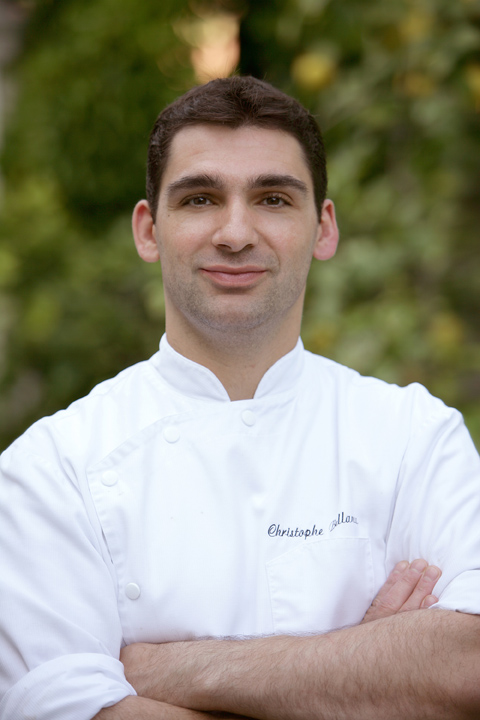 Last year Christophe Bellanca, 33, (right) took over the kitchen, and
he is both maintaining the great traditions of haute cuisine at
L'Orangerie while adding a good deal of his own personality.
Half-Italian, half-French, Bellanca has cooked in restaurants on the
Mediterranean, as well as at the three-star Georges Blanc and the
two-star La Pyramide. He then honed his pastry skills outside Geneva at
Domaine de Châteauvieux, then went on to become chef de cuisine
at Pic in Valence before heading for L.A. and L'Orangerie, where he
keeps to the restaurant's very generous menu and retains some signature
dishes, including the scrambled eggs laced with sour cream, onions, and
chives, in their shells and topped with sevruga caviar, set in lovely
silver holders (below).
Last year Christophe Bellanca, 33, (right) took over the kitchen, and
he is both maintaining the great traditions of haute cuisine at
L'Orangerie while adding a good deal of his own personality.
Half-Italian, half-French, Bellanca has cooked in restaurants on the
Mediterranean, as well as at the three-star Georges Blanc and the
two-star La Pyramide. He then honed his pastry skills outside Geneva at
Domaine de Châteauvieux, then went on to become chef de cuisine
at Pic in Valence before heading for L.A. and L'Orangerie, where he
keeps to the restaurant's very generous menu and retains some signature
dishes, including the scrambled eggs laced with sour cream, onions, and
chives, in their shells and topped with sevruga caviar, set in lovely
silver holders (below).It is extremely difficult to choose among items that are as savory as a crème brûlée of foie gras with a green apple mousse, or a foie gras ravioli in a truffle broth. Vegetarians, of which L.A. has a few, will be enchanted by the "Légumes et Fruits de Saison," served with arugula granité.

This being a formal French dining experience, there is an assortment of ripe French cheese offered before dessert, then pastry Hugo Artinian will delight you with sweets like his lemon meringue pie in a confit lemon shell and a basil seed juice; a citrus-scented caramel mousse, with caramelized Rice Krispies, salted butter caramel ice cream, and a clear nougatine. Soufflés are justly famous at L'Orangerie.
This is as good as French cuisine gets in the United States, and L'Orangerie continues to be a special place for special occasions. While not inexpensive, it is far from being as notoriously pricey as many of its competitors in New York, London, or Paris. Dinner prices start at $15 for appetizers, $35 for entrees, and $15 for desserts. The 8-course Menu Royal costs a remarkable $145 (what you pay for a three course meal at Alain Ducasse in New York).. So if you're feeling quite swell and want to treat yourself or a loved one to a grand night out, L'Orangerie should definitely be your first choice in Los Angeles.
How L.A. Got Its Groove Going
by Janet Albaugh
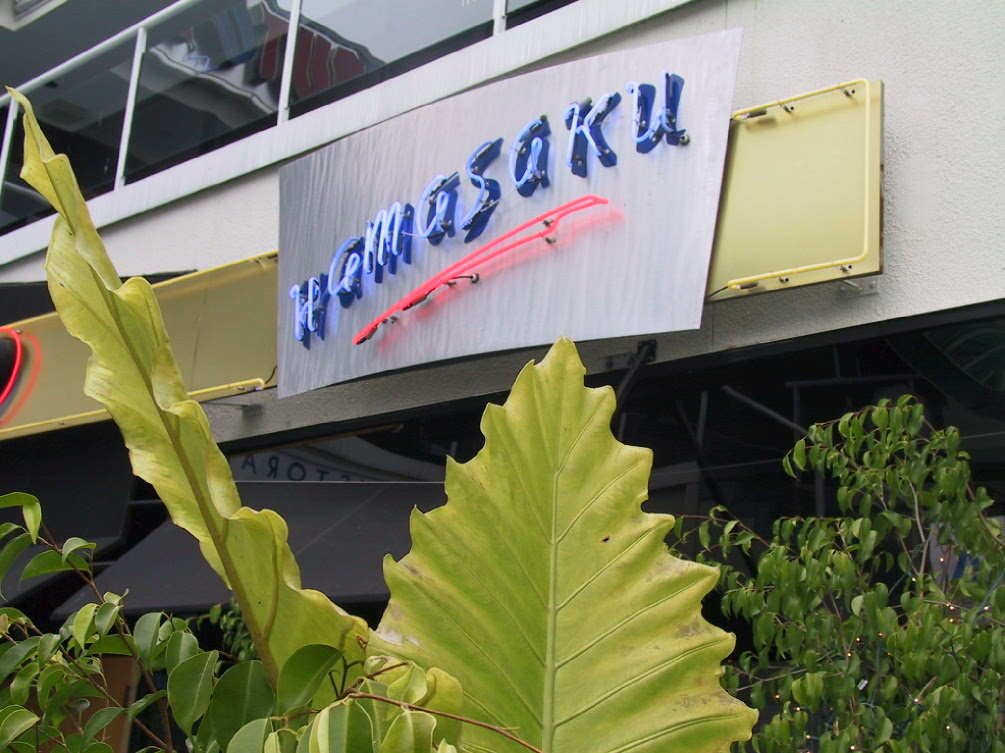 Toshi Kihara may be the
most important restaurateur
you’ve never heard of--unless
you’re a
Toshi Kihara may be the
most important restaurateur
you’ve never heard of--unless
you’re a What Wolfgang Puck did with traditional pizza at the original Spago back in the '80s, Kihara has done for sushi, which makes perfect sense because both Wolf and Toshi began their
“I didn’t speak English,” Kihara says, “and Wolf only spoke Austrian. Patrick yelled at us both in French.” Somehow it worked out well enough to make history. Ma Maison changed the fortunes of a city with no great culinary identity beyond the Cobb Salad and roadside grub made to resemble food. Back in the early '80s, before Ma Maison, there simply wasn't much of a restaurant scene in
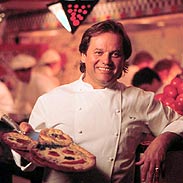 Meanwhile, Toshi and Wolf, waiter and chef, watched and
learned from Terrail how to charm the clientele, especially the stars,
with elegant
European service minus the gourmet pretension. Puck’s
vocabulary was growing too, learning to cook French-ish for stars with
lactose
intolerance, hypoglycemia, and Zone diets. He changed the menu from
really
French to what his clientele wanted--figure-flattering dishes, sauce on
the
side, smaller portions of protein, and more of those perfect
Meanwhile, Toshi and Wolf, waiter and chef, watched and
learned from Terrail how to charm the clientele, especially the stars,
with elegant
European service minus the gourmet pretension. Puck’s
vocabulary was growing too, learning to cook French-ish for stars with
lactose
intolerance, hypoglycemia, and Zone diets. He changed the menu from
really
French to what his clientele wanted--figure-flattering dishes, sauce on
the
side, smaller portions of protein, and more of those perfect When Puck left Ma Maison to open Spago, he asked Toshi to go with him. Puck customized more than pizza (left), creating signature dishes, using local foodstuffs suited to the tastes of his clientele. This customization, using local ingredients suited to local tastes is what, in the hands of Puck, Michael McCarty at Michael's, and a few others, became California Cuisine.
In
Back then Toshi’s job at Spago was to be more than a waiter. Puck entrusted him with the important power tables, using his intuitive talent for hospitality, plus the charm and personal attention he learned at Ma Maison. While complacent East Coast menus were looking toward

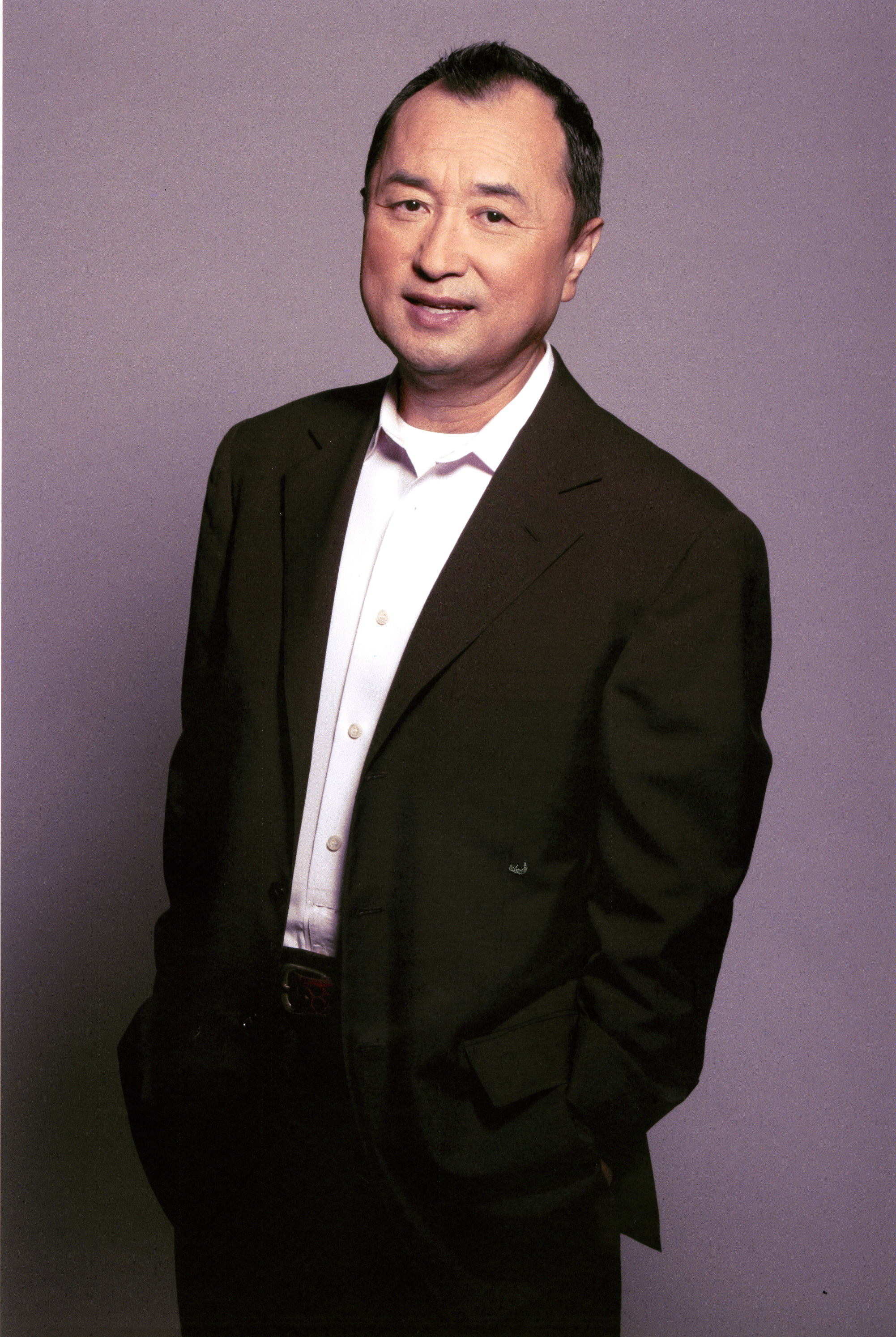 Today Kihara’s own restaurant, Hamasaku (right), bears witness to all of the
above. He has assembled all the right ingredients. Obviously, the
food
has to be good, and, in fact, it’s divine. But it’s not Japanese food,
it is
sushi reinvented. He has learned to be a brilliant host, he has learned
to suit
the menu to the clientele, and he has the trust and loyalty of
celebrity diners
who are comfortable to leave everything to him. If they don’t like
sushi, this
host-with-the-most offers them rack of lamb.
Today Kihara’s own restaurant, Hamasaku (right), bears witness to all of the
above. He has assembled all the right ingredients. Obviously, the
food
has to be good, and, in fact, it’s divine. But it’s not Japanese food,
it is
sushi reinvented. He has learned to be a brilliant host, he has learned
to suit
the menu to the clientele, and he has the trust and loyalty of
celebrity diners
who are comfortable to leave everything to him. If they don’t like
sushi, this
host-with-the-most offers them rack of lamb.Toshi (left) gives them what they want. The sushi roll he created for Christina Aguilera is one of the most popular dishes on the menu. It combines spicy tuna, avocado and crunchy rice in a sesame-studded crêpe with a spicy-sweet sauce. Christina Applegate’s sushi has no raw fish, just baked salmon, chopped crab, avocado and a dark, sweet glaze. The food he serves would not seem very Japanese in
It is common knowledge that trends begin on the coasts--and with what stars do, wear, and eat. Pizza and sushi have become fused into our culture. Just as salsa now outsells ketchup as
by John Mariani
JOVIA
135 East 62nd Street
www.jovianyc.com
 NYC is crawling with
culinary talent--duh!--but
it's a fact that can't be overstated, and, as the song says, "If you
can make it here, you'll make it anywhere."
NYC is crawling with
culinary talent--duh!--but
it's a fact that can't be overstated, and, as the song says, "If you
can make it here, you'll make it anywhere."So, when you combine the talent and experience of people like Stephen and Thalia Loffredo (below), who long ago established Zoë as one of the prime movers of Soho gentrification, and Josh DeChellis, whose restaurant Sumile brought exciting Asian fusion food to Greenwich Village, you should be getting something special, this time on the upper east side, which can use some excitement.
They have set themselves up in what has seemed to be a jinxed location for several prior restaurants, yet one can only surmise that it was no hex but only incompetence and mediocrity that caused the rest to flop, especially because the townhouse the new Jovia occupies is wholly charming; indeed, you all of a sudden come upon it on a street of other fine townhouses, as well as the Knickerbocker Club, the Colony Club, the Curzon apartment house, the Beaux Art beauty of the Representative of the Permanent Representative to the U.N., and Revlon's corporate offices.
You enter a swank downstairs bar (below)--and I hope the Loffredos don't encourage the kind of bar crush
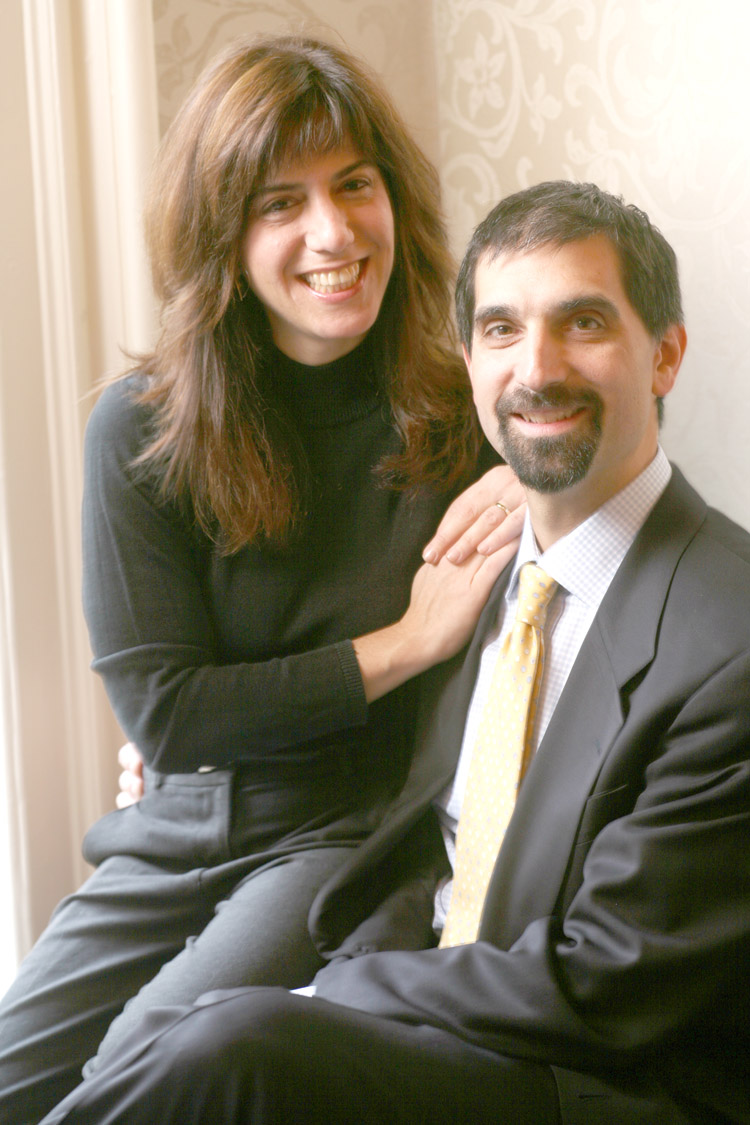 that ultimately affected the operation of
previous restaurants here--move towards a semi-open kitchen to the
rear, then go upstairs past a wall of wine to a dining room that looks
out over the relative quiet of East 62nd Street (above). The dining room to
the rear, curiously enough, is by far the prettier one, with a
fireplace, satin curtains, and taupe-colored wallpaper; the front
room has the charm of its location, handsome wood-and-leather chairs,
and fine photography by Andy Katz on the walls, but the Venetian
hanging fixtures are not flattering to anyone's complexion. As
seen in the photo above, however, at lunch the sun pours through the
tall French windows. At night the bare, polished wooden tables absorb
rather than reflect the light. (I'm finding only one out of five new
restaurants these days are providing the amenity of napery any longer.)
that ultimately affected the operation of
previous restaurants here--move towards a semi-open kitchen to the
rear, then go upstairs past a wall of wine to a dining room that looks
out over the relative quiet of East 62nd Street (above). The dining room to
the rear, curiously enough, is by far the prettier one, with a
fireplace, satin curtains, and taupe-colored wallpaper; the front
room has the charm of its location, handsome wood-and-leather chairs,
and fine photography by Andy Katz on the walls, but the Venetian
hanging fixtures are not flattering to anyone's complexion. As
seen in the photo above, however, at lunch the sun pours through the
tall French windows. At night the bare, polished wooden tables absorb
rather than reflect the light. (I'm finding only one out of five new
restaurants these days are providing the amenity of napery any longer.)Mr. DeChellis, born in Bogotá and bred in New Jersey, has worked with Wolfgang Puck and Rocco di Spirito, picking up the Asian fusion accents that distinguishes his work at Sumile, but he spends just about all his time here at Jovia balancing an admirable American sensibility with a decided focus on Italian and Mediterranean flavors. Indeed, not since Mario Batali opened Babbo has any chef connected these culinary dots with such spirit and personality. You taste it in his beef brodo--usually a ho-hum item, here deeply satisfying, swimming with tiny taleggio-cheese-stuiffed ravioli, dates, and Swiss chard. His potted suckling pig and duck with an endive-porcini marmalade and a cured duck salad is somewhat more Provençal, while his shrimp and scallops with Little Neck clams, garlic, and parsley are simple and wonderful.
Of the pastas I tried, linguine with perfectly cooked calamari took on texture and bite from chili flakes and toasted garlic, with the added tingle of lemon that really made this dish stellar. Ravioli of veal shank with a tomato ragù and ricotta was a luscious dish, and potato gnocchi with wild mushrooms and Parmigiano was good, though the dumplings were too soft.
The main courses--eight of them plus a seasonal specialty--all follow the same savory balance of flavors: Roasted monkfish comes with an enchanting onion-quince agrodolce and bits of prosciutto, a dish hitting all points on the palate. Squab comes crisp and medium-rare, as ordered, with a glaze of dates, cabbage, and a colorful quail egg, while grilled lamb chops from the loin are treated to a Mediterranean gloss of olive oil and lemon, with glazed eggplant. Side dishes include truffled polenta and mascarpone-enriched spinach.
Meanwhile pastry chef Monica Bellissimo is turning out first-rate desserts like a warm Valrhona chocolate panettone with caramelized semi-freddo, crunchy toffee, and milk chocolate ice cream (that's just one dessert!) and what is perhaps my favorite variation ever on Italian zeppole--crispy fritti with mascarpone and date cream inside and coconut ice cream on the side.
Jovia is not just an outstanding example of how novel ideas can co-exist with gustatory sense but a very gracious place whose new home on the upper east side should bring it the good fortune its predecessors didn't enjoy. Were Jovia anywhere else in the city I'd go there just as happily. I know it's still January, but it's the best meal I've had thus far in 2006.
Jovia is open for lunch and dinner daily. Dinner appetizers range from $11-$14, main courses $23-$37.
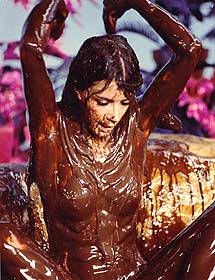
ARE THOSE MARASCHINO CHERRIES OR ARE YOU GLAD TO SEE ME?
"To call The Supper Club (in San Francisco) stimulating might be an understatement. At the restaurant's opening party, two women, naked save for a layer of chocolate pudding. were wheeled out on a cart and then doused with whipped cream by chef Jerry McGinnis. The crowd was then given cookies with which to dip in."--Karen Palmer, "Pillow Talk," 7x7 Magazine (November 2005).
DEPARTMENT OF WRETCHED EXCESS
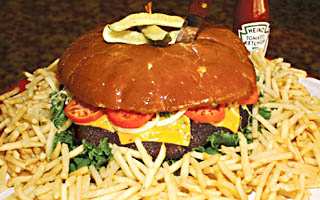
QUICK BYTES
212-754-9494.
* From Feb. 16-18 the 2nd annual Savor Dallas Weekend offers events incl: the Sizzling South of the Border Celebration at the Latino Cultural Center; Wine, Food and Rhythm at the African American Museum; nearly two-dozen winery dinners at restaurants in Dallas-Fort Worth; The Arts District Wine Stroll; Reserve Tasting featuring ultra-premium wines and spirits; Bubbles 'N Jazz, presented by Moët & Chandon, starring Grammy Award winners The David Sanborn Group; The International Grand Tasting, with over 500 wines and spirits and more than 50 of Dallas/Fort Worth’s most celebrated chefs, at the Wyndham Anatole; The Viking Range Celebrity Stage cooking demos, with Rocco DeSpirito, Gale Gand, Aaron Sanchez, et al.; Tasting seminars and panels with experts Steve Olson, Andrea Immer Robinson MS, Dale DeGroff, Doug Frost MS/MW, et al.. Savor
* In celebration of the 100th anniversary of The Ritz London, the luxury hotel has launched its "Centennial Celebration" rooms package, incl. a Phantom Rolls Royce airport pick-up, a 2-night stay, a bottle of Ritz Centenary Cuvée Champagne, a full English breakfast, a night at the London theatre, a 4-course dinner in the Ritz Restaurant a visit to The Ritz Salon for two treatments, and membership to The Ritz Club for the duration of the stay. Prices range from £1,500 to £3,500. Call +44 (0) 207 300 2308, or visit www.theritzlondon.com.
* In Lausanne, Switzerland, the Beau-Rivage Palace offers a Valentine's promotion Feb. 14 and every weekend in February, priced from 580 Swiss francs for a Comfort room with garden view; 680 for a Superior Room with lake view and 800 for a Deluxe Room with lake view, the promotion incl.: Welcome glass of Champagne; full buffet breakfast in Salon Grammont or continental breakfast in room; choice of one 60-minute Cinq Mondes Spa Ritual in a couples' suite. The special saves over 30% off normal room rates. Call 011-41-21-613-3333; www.brp.ch, or through The Leading Hotels of the World at: 1-800-223-6800.
MARIANI'S VIRTUAL GOURMET NEWSLETTER is published weekly. Editor/Publisher:
John Mariani. Contributing Writers: Robert Mariani, Naomi
Kooker, Kirsten Skogerson, Edward Brivio, Mort
Hochstein, Lucy Gordan, Suzanne Wright. Contributing
Photographers: Galina Stepanoff-Dargery, Bobby Pirillo. Technical
Advisor: Gerry McLoughlin.
Any of John Mariani's books below
may be ordered from amazon.com by clicking on the cover image.
 |
 |
 |
 |
 |
 |
copyright John Mariani 2006